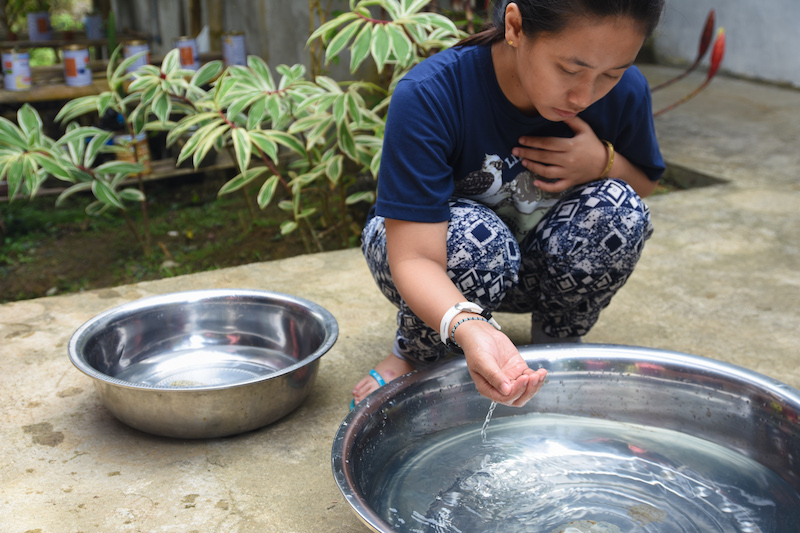Why is it some are calm and speak carefully while others can’t stay still and speak without thinking? Why is it some can be so emotional while others have a hard time connecting emotionally with others?
Human beings, according to Traditional Chinese Medicine, are like the four elements: Earth, Air, Fire, Water. These elements have unique qualities, both positive and negative, that work simultaneously to create the universe. In the same way, whether you’re confident or shy, aggressive or calm, loud or quiet, timid or outgoing – your personality is filled with both pros and cons. Our lifetime challenge is that we have all the elements in us but one element usually dominates until we learn how to balance them out.
That’s why it’s so important to learn how to identify which elements are most present in ourselves and in others so we know what is lacking that needs to be added or what is excessive that needs to be reduced.
This is hugely important for relief workers dealing with different types of evacuees who have different ways of coping with stress. Siege survivors, for instance, usually suffer from having too much of one element in them which causes their imbalance – and sickness. For instance, someone who is feverish has too much fire in them. Someone whose skin feels cold and clammy may lack warmth.
 Touching, looking, tasting, smelling water in a pail. Photo by Louise Far
Touching, looking, tasting, smelling water in a pail. Photo by Louise Far
To understand the elements better, we volunteers of Creating Sinag Within study a stone from the garden, water in a basin, air on the rooftop, and a crackling bonfire. Our observations are so many that they fill the board completely. Here’s a snippet of our conclusions about each element and how they relate to the dynamics between adults and children:
Earth
The earth as an element is strong, stable, and firm. It is also very nurturing and can help plants grow well. Like the earth, a person can be a dependable and loving authority. This is especially important when dealing with young children and having to decide what’s best for them because young children don’t have the capacity yet to decide for themselves. As adults and parents we need to be confident and loving, not weak and unsure in front of the children so that they grow up with clear boundaries and know that there’s a time for everything.
Water
Water as an element is humble and selfless; it becomes whatever is put in it. It has no odor, color, shape, and taste of its own. Persons who are like Water are adaptable and flexible. Young children are like Water in a very extreme way. They are like sponges and absorb everything around them. Their soul quality is to follow and imitate. As adults and parents we should be very careful about expressing our emotions and thoughts when we’re with children because they pick up and are influenced by everything – the seen and the unseen, the spoken and the unspoken.
Air
Air as an element can penetrate vacuums but cannot penetrate solids. It is volatile and always moving. That’s why, of all the elements, Air has the hardest time to keep still. A person is like Air when s/he is talkative, restless and likes to multitask. Children are like air — because they cannot concentrate for a long period time. To help them, various age-appropriate activities can be designed for children that create balance and keep their sanguinity in check. As adults and parents, it’s good if we can give children activities that help them focus and persevere on one task at a time.
Fire
Fire is the element of life. It is giving – but too much of it can be destructive. Passionate people have a lot of fire in them. The attention, intention, and enthusiasm of adults are like fire. Children feel this intensely, without adults having to say a word. It is important therefore that adults strive to be warm, but not hot. As adults and parents, we need to nurture the children enough, and give them space to grow independently as well.
Author’s note: Part of Creating Sinag Within’s Mission 1 in August 2017 and Mission 2 in October 2017 was enabling volunteers, with the help of doctors, to be able to correctly diagnose a sick person and suggest an appropriate treatment. This was done through identifying whether patients have too much or too little of one or more elements in them – air, water, fire, and/or earth. CSW therefore also empowered volunteers to become healers in the real sense of the word. Taking the lead were health workers from various community managed primary health programs in Digos, Kidapawan, and Arakan. For more information about how to support the next activities of Creating Sinag Within, visitfacebook.com/creatingsinagwithinor contact the Founder and Director, Rosan Aliya Agbon at creatingsinagwithin@gmail.com.
